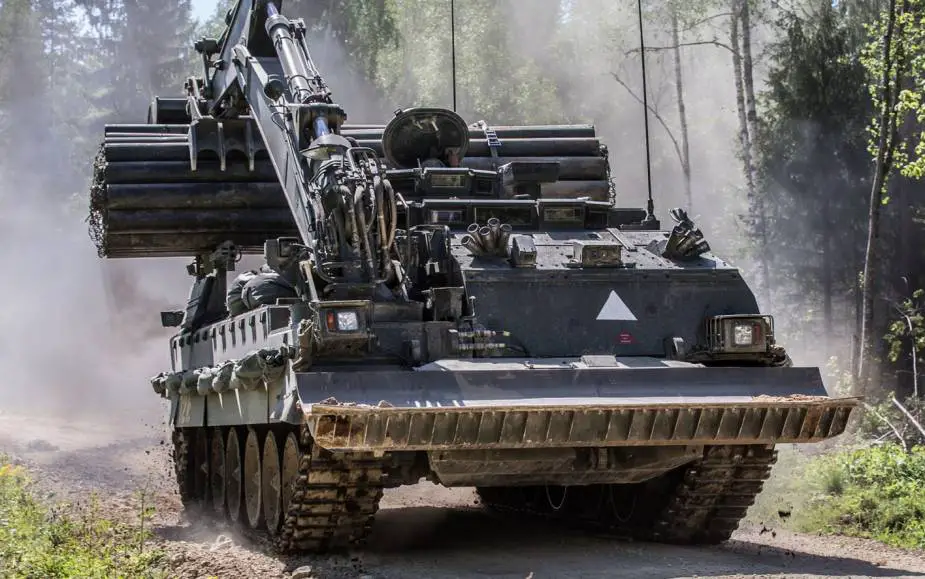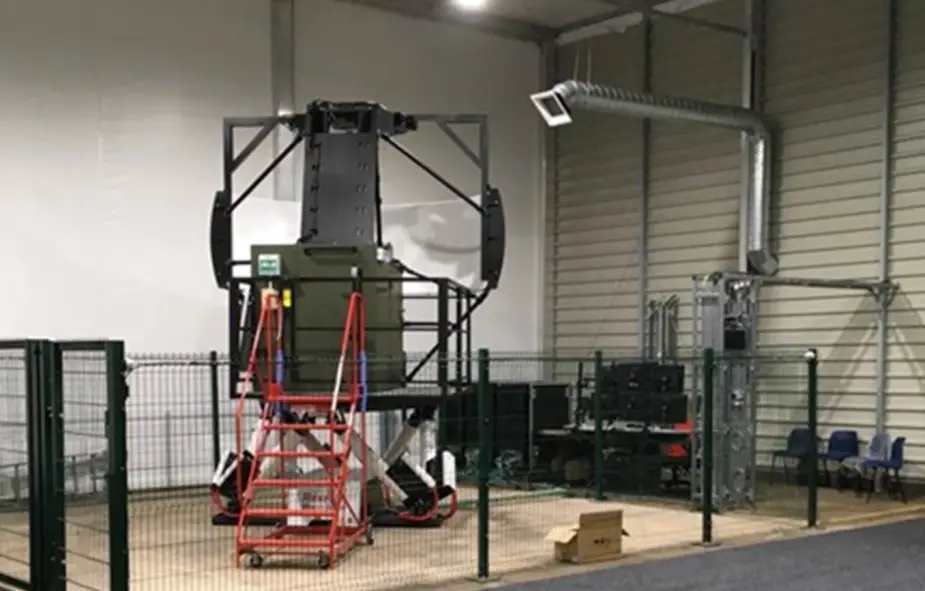As the British Army gears up to introduce new armoured vehicles to its fleet, an innovative simulation system will deliver training for all vehicles from a single platform, the British MoD announces.
Follow Army Recognition on Google News at this link

Trojan Armored Vehicle Royal Engineers (AVRE) (Picture source: British MoD)
Over the next few years, the Boxer mechanised infantry vehicle (MIV) and Challenger 3 main battle tank (CR3) will become operational alongside Future All-Terrain Vehicles (FATV), the Trojan Armoured Vehicle Royal Engineers, the Titan armoured bridge launcher and the M270 Multiple Launch Rocket Systems (MLRS).
At present, troops carry out low-level training on the Combined Arms Tactical Trainer (CATT), a networked collection of 150 simulators that include replicated interiors of the Challenger 2 and Warrior tanks.
Project VULCAN will provide training on just one platform for many different types of AVs. It will replace the low-level tactical training carried out on CATT, up to and including Company/Squadron level, but not higher-level collective training. Known as the Vulcan Ground Manoeuvre Synthetic Trainer, the simulator system will provide comprehensive technical training for both individuals – driver, gunner, commander – and crews, while the Land Reality Trainer will provide tactical training. Project Vulcan will initially be a desktop system where troops must achieve a required level of competency before they can go into the simulator. The simulator will be a modular system into which all the different controls for each piece of equipment, be that CR3, Boxer etc, can be connected.
Model crew stations will allow for individual training in a controlled, classroom environment, providing safe learning. Soldiers will move on to integrated crew-level training at troop or platoon level, covering a maximum of four vehicles at one time. Connectivity will enable soldiers to fight in the same virtual battlespace in different arms, vehicles and locations.
Brigadier Frazer Lawrence OBE, Head of Capability (Training), said: “Project Vulcan is a huge step forward for the Army in terms of using simulation to support training. It’s efficient, in that the same simulators can support multiple platforms, and it’s effective, enabling soldiers to train in close proximity to where they work. Importantly, Project VULCAN will be interoperable with both the Interim Combined Arms Virtual Simulation (Deployable), enabling the VULCAN training experience to be expanded to include dismounts and other combat elements not directly supported by VULCAN, and with the simulation and simulators delivered as part of the Collective Training Transformation Programme from 2025 onwards. Individual and collective training systems will be interoperable by design.”
Under Future Soldier, the Army will use more synthetic or simulated training, saving money and keeping soldiers safe. Synthetic training using one system will ensure consistency with all troops trained on the same platform. Savings will be achieved on the cost and wear and tear of using actual armoured vehicles for driver training platforms. The simulator will also enable complex and realistic training that cannot be conducted ‘live’ on the Army’s UK training estate.
The Ministry of Defence is investing an initial £90million in Project Vulcan which could rise to as much as £200million as new armoured vehicles are added to the Army’s fleet. Project Vulcan is currently in the assessment phase and an invitation to tender is scheduled to go out to the industry next month.
Training is expected to take place in time for the arrival of the first Boxer MIVs to units in 2023. The initial contract will run for five years with options to extend it for two further five-year periods.

At present, troops carry out low-level training on the Combined Arms Tactical Trainer (CATT), a networked collection of 150 simulators that include replicated interiors of the Challenger 2 and Warrior tanks. (Picture source: British MoD)















